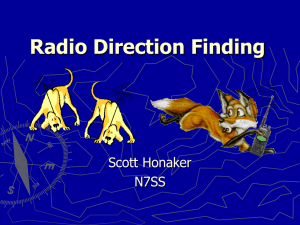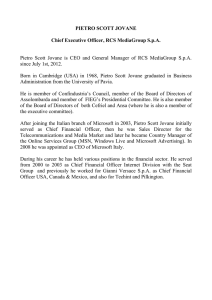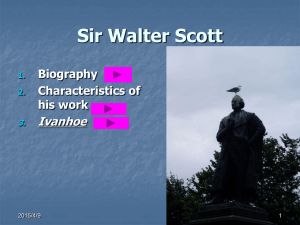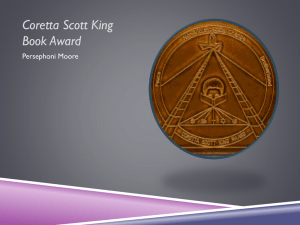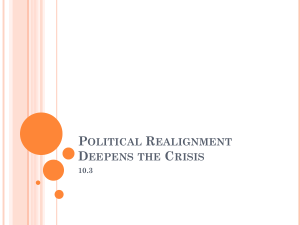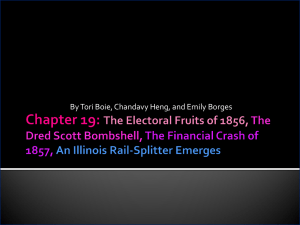Digital Communications on VHF
advertisement
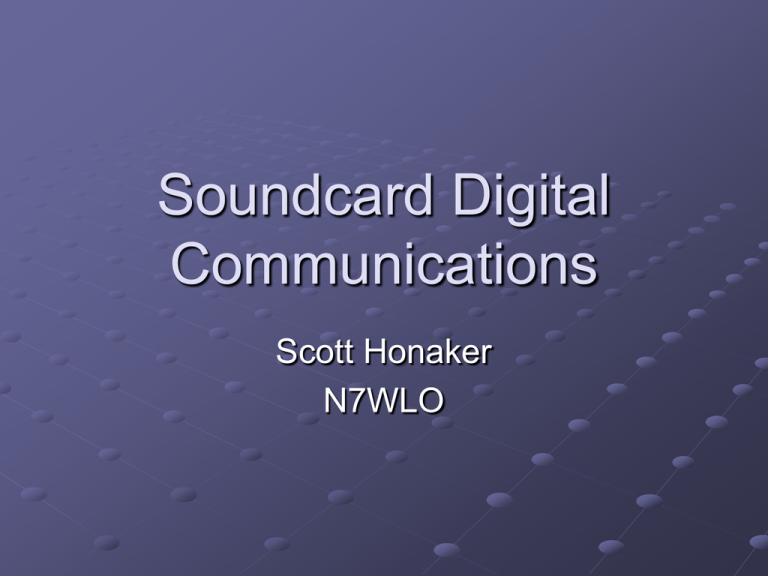
Soundcard Digital Communications Scott Honaker N7WLO Connecting Your Radio Radio connections should be made in the following order Power Supply Antenna Computer Mike Key – if you must A computer connected to the radio is the second only to the antenna in importance Scott Honaker - N7WLO 2 Evolution of Acronyms Human transmitted digital CW – Operator determines performance Machine sent digital RTTY – Baudot 5-bit code Machine sent corrected data packets Packet – APRS – TCP/IP High noise immunity RTTY replacements PSK31 – QPSK – MFSK – MT63 Intermittent channel weak-signal modes HSCW – FSK441 (WSJT) Extreme weak signal mode JT44 (WSJT) Scott Honaker - N7WLO 3 Soundcard Packet AGW Packet Engine for 1200 or 9600 Supports Terminal, TCP/IP, DX Cluster, Digipeater APRS Software support via APRSPoint, UI View and WinAPRS Supports multiple simultaneous connections Allows remote use over a network/Internet Scott Honaker - N7WLO 4 PSK 31 Designed by Peter G3PLX Based on the RTTY mode of operation useful for live keyboard to keyboard QSO Works at 31.25 bauds Uses varicode character coding providing 50wpm Give very good copy under low Eb/No numbers and is thus suitable for QRP That instead of using FSK or on/off keying uses BPSK or QPSK with a Viterbi decoder Uses advanced DSP and narrow band (31 Hz!!) techniques Scott Honaker - N7WLO 5 PSK 31 Frequencies HF Band 160 M 80 M 40 M 30 M 20 M 17M 15M 12M Frequency 1807 KHz 3580 KHz 7070 KHz 10140 KHz 14070 KHz 18100 KHz 21080 KHz 28120 KHz Scott Honaker - N7WLO VHF Band 6M 2M 1.25 70 cm 33 cm Frequency 50.290 MHz 144.144 MHz 222.070 MHz 432.200 MHz 909.000 MHz Most PSK 31 is USB 6 QPSK Quadernary Phase-Shift Keying Four phases instead of 2 for PSK Extra capacity used for error-correction Improvements of up to 5 fold in error-rate Not as good for QRP (3dB hit) Extra transmission delay More frequency sensitive (within 4Hz) Must use correct sideband Start BPSK and switch to QPSK Scott Honaker - N7WLO 7 MFSK 16 Sixteen tone carriers, ~16Hz apart 42 WPM in 316Hz with FEC High rejection of pulse and broadband noise due to narrow bandwidth per tone Low baud rate for sensitivity and multipath rejection - data bit rate higher than symbol baud rate Tolerance of ionospheric effects such as doppler, fading and multi-path Scott Honaker - N7WLO 8 MT 63 Uses 64 tone carriers 100 WPM at ~1KHz wide Even more FEC than MSFK Up to 25% of data can be destroyed Long delay due to heavy error-correction ID is generally done in CW Scott Honaker - N7WLO 9 HamScope Software Scott Honaker - N7WLO 10 High Speed CW Used for Meteor-Scatter Machine sent 100-2000 WPM Allows contacts over paths lasting only seconds – “pings” No error correction Transmission schedule negotiated No random QSOs Scott Honaker - N7WLO 11 FSK 441 - WSJT Like HSCW, one uses a high-speed loop to complete a QSO over several short bursts of signal 100% duty cycle, so no extra energy wasted by On/Off keying More user-friendly interface--like RTTY or PSK31 modes Much better S/N than HSCW at same speed Each character takes about 2.3ms to send with four tones. That’s 441 baud. Scott Honaker - N7WLO 12 FSK 441 Spectral Display Scott Honaker - N7WLO 13 JT 44 - WSJT Uses long term signal averaging to recover a signal that is up to 30dB below the noise floor! Humans have “short ears” limited by their sensory memory—they can only analyze a signal in a small timeframe Computers can analyze in relatively large timeframes Inspired by the PUA43 mode (with dedicated hardware) Uses 44 tones, one for each character in the PUA43 alphabet (same as FSK441), plus a synchronization tone. Each character is assigned a unique frequency Slow transmission speed: 5.38 baud Highly redundant (FEC) Scott Honaker - N7WLO 14 JT 44 Signal Decoding Scott Honaker - N7WLO 15 JT44 – Terrestrial Use JT44 works well on troposcatter paths that are too short for MS enhancement Several operators have used it on 6m for borderline TE, and marginal Es openings. Microwave non-line-of-sight paths Could be a good way of overcoming atmospheric absorption above 10GHz Contest stations can make otherwise impossible contacts Scott Honaker - N7WLO 16 JT44 – EME Use JT44’s ability to recover extremely weak signals makes it ideal for EME Most activity by arranged schedule. 144MHz is the most popular band. Also operation on 50 MHz, 432MHz, and 1296 MHz so far…. A pair of single-yagi stations should be able to work each other, with QRO power Portable EME operation can be a reality Scott Honaker - N7WLO 17 What Does It Take? Windows PC Windows 98 or higher recommended Pentium 150MHz or better SoundBlaster compatible soundcard Most laptop sound systems work More expensive cards have less noise and are more frequency stable/accurate Interface cabling RigBlaster or Rascal interfaces not necessary Scott Honaker - N7WLO 18 Computer/Radio Interfacing Line or Speaker Output Line or Mike Input Interface COM Port COM Port Push-to-talk (PTT) Receive Audio Transmit Audio 144.390 Computer Control CI-V or CAT Scott Honaker - N7WLO 19 Soundcard Interfacing Most radios have audio in/out PTT on back via a Data or AUX port These line level in/outs are best Mike/speaker levels can be used with appropriate attenuation PTT support generally via transistor or optoisolator switch PTT can be done with CAT port but requires radio-specific software Scott Honaker - N7WLO 20 PTT Switching Scott Honaker - N7WLO 21 Soundcard Interface Scott Honaker - N7WLO 22 Field Day Use on VHF VHF/UHF QSO counts are notoriously low The vast majority of QSO are voice FD scoring gives 1 point for voice, 2 points for CW and 2 points for data QSOs Typical VHF QSOs might be 80 – all voice If 50% added soundcard modes, we get 5 points per station rather than 1 80 points becomes 240 points This doesn’t count QSOs now possible with PSK Scott Honaker - N7WLO 23 Remote Control Radio tuning, antenna rotation, transmission and reception are all computer controllable This software is easily remote controlled via Terminal Server or NetMeeting Access can be via LAN or Internet There are shared radios on the Internet Scott Honaker - N7WLO 24 Resources AGW Packet Engine http://www.raag.org/sv2agw/inst.htm PSK 31 Home page http://aintel.bi.ehu.es/psk31.html WSJT Home Page http://pulsar.princeton.edu/~joe/k1jt/ HamScope Software http://www.qsl.net/hamscope/ MixW Software http://www.tav.kiev.ua/~nick/mixw/mixw.htm Rascal Interface http://www.packetradio.com/rascalmkv.htm Scott Honaker - N7WLO 25
